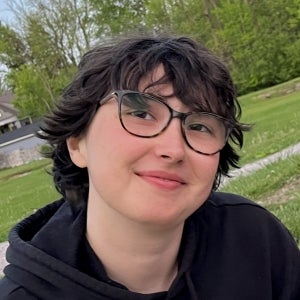Though a regular Saturday includes a slow morning and a cup of tea on the porch, my weekends have been rearranged by a studio art course. This semester, I’m taking an Introductory Photography class that focuses on Black and White Photo. Though making art has always been an integral part of my life, this is only the third studio art course I’m taking at Oberlin. I’m completely new to photography and I’ve never used a film camera or printed images by hand. That said, after a few class demonstrations and mistakes in the darkroom, I’m becoming more and more invested in photography. The processes that have to occur between taking a picture on a camera and creating a print are time-consuming and precise, but at the same time extremely gratifying. Often, what feels like thirty minutes in the photo lab turns out to be three hours. I love shooting new images without knowing what they’ll look like, and usually plan to set aside a chunk of time in the week to do so. Last week, that chunk of time became my entire Saturday. For any students who think they may want to take photos at Oberlin for the first time, or are already building a portfolio, I thought I’d share my own amateur process and the story of a Saturday well spent.
On a cold 9am Saturday morning, I set out to Walmart, where the parking lot was already stuffed with cars and shopping carts could be heard swerving up and down the aisles. The first photo project prompt was simple: mapping. The word was a guide that left lots of room for the imagination. I planned to map the shopping experience. Though the idea was not yet fully formed, I knew I wasn’t artistically experienced enough to take secretive film photos. The 15 seconds it takes me to measure the light necessary for my shot, my inability to remember to advance the film between images, and the painfully loud shutter click all gave me away. Instead, the process became a bit more interactive as I began approaching strangers as they scanned sauces or reached for chips. My pitch was a school project that required me to learn how to use a film camera. Most people I asked were generally receptive, and I encouraged them to keep shopping as I began preparing to take their pictures. Once in a while, I would ask them to hold still for a certain angle, but with the general flurry of shopping, each interaction ended with a nod and a "have a good day." I captured shopping carts as images that reflect the people pushing them, and came across a couple that had filled their cart with meat.
My mapping project evolved from there. I went to a locally owned butcher shop hoping to find racks of lamb hanging from the walls, but instead was met with a friendly supermarket on a local farm run by the Amish community. I asked an Amish woman if I could take her picture, but after a gentle no, I turned my attention to the meat. Neatly packaged in plastic, the beef and chicken became alien landscapes through my magnified lens. I spent an hour inspecting the wide variety of steaks through my camera and then set out on my way to continue shooting a new roll of film.
My final stop was IGA, a local supermarket just up the road from Oberlin. There, the employees were chatting with each other like old friends, and welcomed images into their space. I had a great conversation with the man stocking bread, who revealed that he had 5 other orders of bread to cover that day alone. By the end of the two hours spent at IGA, I had not only gotten to know the workers and shot an entire roll of film, but I also ended up with 12 dollars worth of sandwich supplies to tide me over during the walk back to Tank (the beautiful co-op I get to live in this semester!).
At this point, my day was decidedly consumed by black and white photos. There was nowhere to go now except the photo lab, where my negatives could be transformed into real live prints. The lab is a collection of rooms in the Venturi art building. The main space is lined with photographs, framed and pinned to the wall to showcase the work of past students and current artists. Large wide tables leave space to practice rolling film before going to the darkroom, sifting through photography books, or getting situated with a new camera. The large space features a light table, and a space for drying prints. Through a door, the photo lab seems to become a never-ending space. A small hallway leads to a print room, three darkrooms, a studio, and a collection of enlargers. That day, after mixing the chemical solutions into a lightsafe box to develop my film, I began printing a set of negatives that had already dried. What felt like a single hour turned into four, and by the time I re-emerged from the lab I had made a few prints and put two rolls of film to dry. As I become more familiar with the processes of developing film and printing negatives, I see many more Saturdays filled with photos in my future. I only began taking studio art courses last semester. Now, as a third-year, I’m thrilled to have the opportunity to create art consistently again and do so alongside other students.


